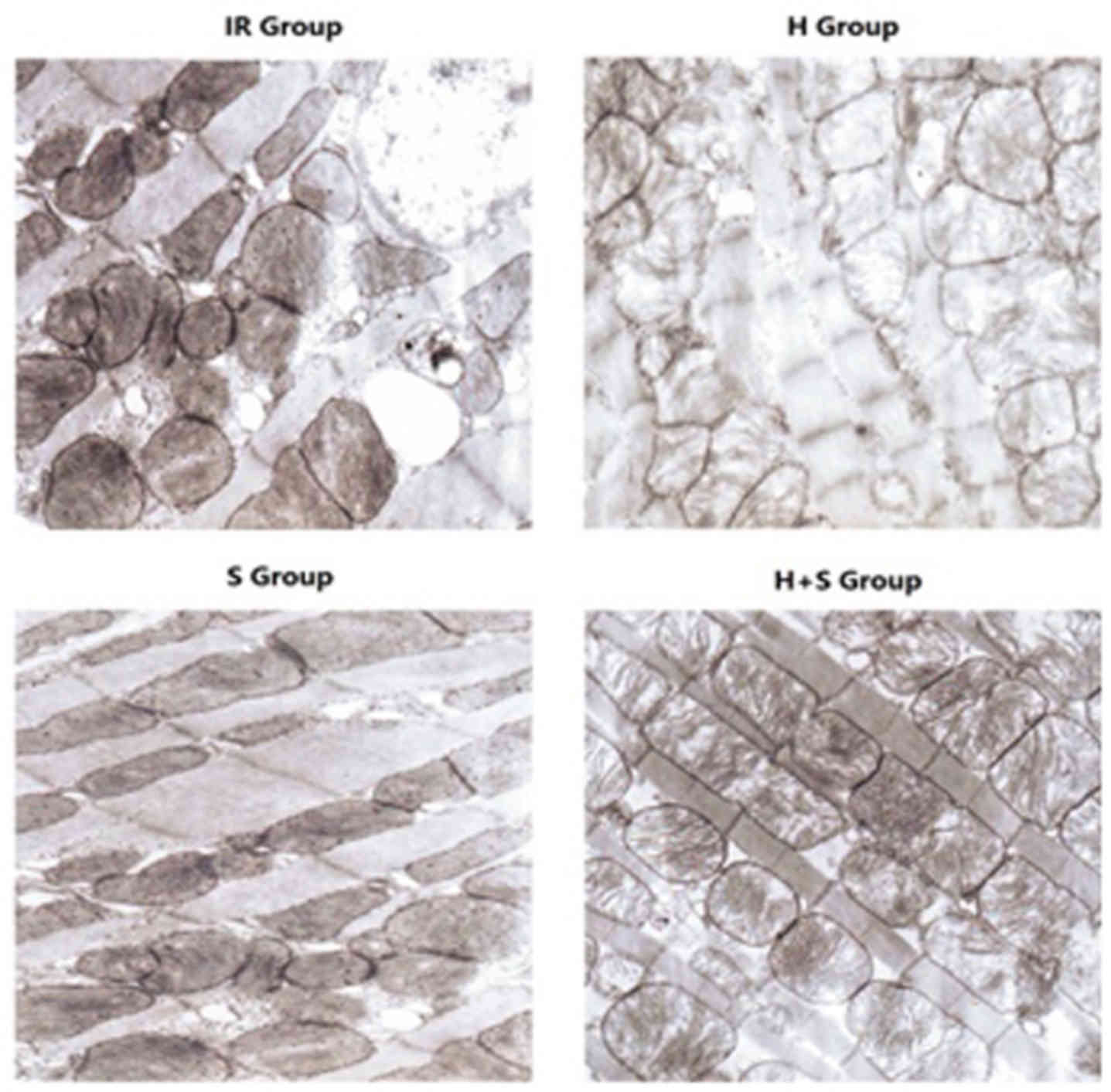Anesthetic postconditioning plus hypothermia following cardiopulmonary resuscitation protects the myocardial ultrastructure by modulating inflammatory events in rabbits
- Authors:
- Published online on: September 5, 2017 https://doi.org/10.3892/br.2017.976
- Pages: 361-364
Metrics: Total
Views: 0 (Spandidos Publications: | PMC Statistics: )
Total PDF Downloads: 0 (Spandidos Publications: | PMC Statistics: )
Abstract
Myocardial ischemia/reperfusion (I/R) injury is usually caused by resuscitation following cardiac arrest. The aim of the present study was to investigate the influence of sevoflurane postconditioning on the myocardial ultrastructure induced by cardiac arrest and successful resuscitation in mature rabbits. A total of 32 rabbits were randomly and equally divided into an I/R group (I/R group), a hypothermia group (H group), a sevoflurane postconditioning group (S group), and hypothermia plus sevoflurane postconditioning group (H + S group). Interleukin (IL)-8 and IL-10 levels in blood were evaluated at four different time points (1 h pre-ischemia: T1; 1, 2 and 3 h after reperfusion: T2, T3 and T4, respectively). The myocardial ultrastructure was evaluated by microscope after the rabbits were scarified. Plasma levels of IL-8 and IL-10 increased in all of the groups from T2. However, compared with the I/R group from T3 and T4, downregulation of IL-8 was significant in the S and H + S groups (P<0.05), and the result of intra-group comparison demonstrated that the level of serum IL-8 was the lowest in the H + S group (P<0.05). By contrast, upregulation of IL-10 was significantly higher in the S and H + S groups (P<0.05), particularly in the H + S group. Notably, ultrastructure damage of the myocardium was significantly lighter, and the structural integrity of the myocardium in the H + S group was better when compared with that of the S group. Thus, sevoflurane postconditioning plus hypothermia protected the myocardial ultrastructure following cardiopulmonary resuscitation by suppressing inflammatory effects.












